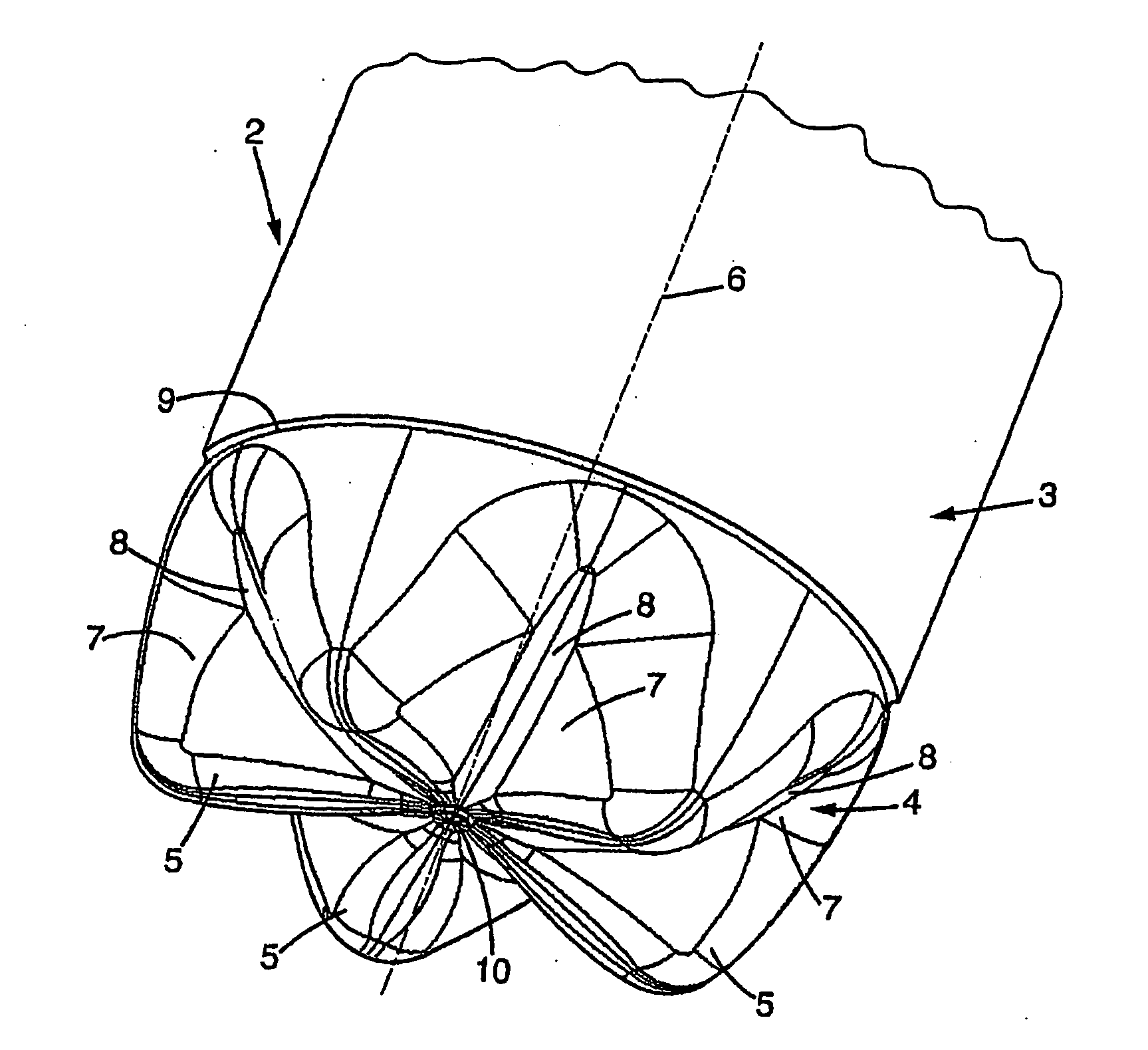Mold Base for Mold Manufacturing Thermoplastic Containers, and Molding Device Equipped With At Least One Mold Provided With Such a Base
a mold manufacturing and thermoplastic container technology, applied in the field of mold manufacturing thermoplastic containers, can solve the problems of container not being able to stand on a support in a stable manner, most difficult to manufacture, container shape loss, etc., and achieve the effect of reducing the width of the bottom, reducing the width of the cavity base, and facilitating removal
- Summary
- Abstract
- Description
- Claims
- Application Information
AI Technical Summary
Benefits of technology
Problems solved by technology
Method used
Image
Examples
Embodiment Construction
[0037]Reference is now made to FIGS. 1 to 5 which depict a mold base 1 intended to be fitted to a mold for the manufacture, by blow-molding or stretch-blow-molding, of containers, particularly bottles, made of a thermoplastic such as PET.
[0038]As shown in FIG. 6, the containers 2 that are to be manufactured with this mold have a body 3 and have a base 4 of the type known as petalloid having five foot-forming protrusions 5 which are distributed angularly at equal distances apart, which run approximately parallel to the axis 6 of the container and are separated from one another by radiating valleys 7 the bottoms 8 of which run in a convex radial curve. All the valleys 7 converge at the center of the base, which is made in the form of a plateau 10 projecting outwards slightly. The container base 4 is connected to the container body 3 by a connecting region 9 that is substantially a cylinder of revolution having a diameter Φ of about 85 to 95 mm.
[0039]With reference now to FIGS. 1 to 5,...
PUM
| Property | Measurement | Unit |
|---|---|---|
| diameter | aaaaa | aaaaa |
| diameter | aaaaa | aaaaa |
| diameter | aaaaa | aaaaa |
Abstract
Description
Claims
Application Information
 Login to View More
Login to View More - R&D
- Intellectual Property
- Life Sciences
- Materials
- Tech Scout
- Unparalleled Data Quality
- Higher Quality Content
- 60% Fewer Hallucinations
Browse by: Latest US Patents, China's latest patents, Technical Efficacy Thesaurus, Application Domain, Technology Topic, Popular Technical Reports.
© 2025 PatSnap. All rights reserved.Legal|Privacy policy|Modern Slavery Act Transparency Statement|Sitemap|About US| Contact US: help@patsnap.com



